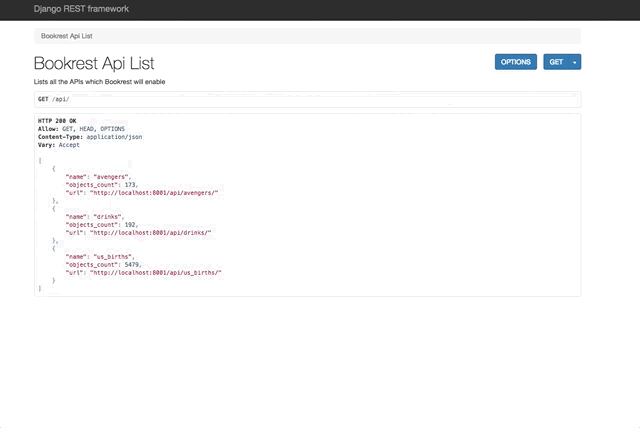Bookrest allows you to add an API (and browsable htmls) to arbitrary databases -- well almost arbitrary, the tables must have PKs. The databases do not need to be managed by Django.
pip install bookrestThen in your settings.py,
INSTALLED_APPS = [
# ...
"rest_framework",
"bookrest",
]Add a key to your settings.DATABASES named bookrest, and point it to the DB you want to expose as an API. Keep your default db as is, you can use it for user management and other Django apps.
DATABASES = {
"default": {
"ENGINE": "django.db.backends.sqlite3",
"NAME": os.path.join(BASE_DIR, "db.sqlite3"),
},
"bookrest": {
"ENGINE": "django.db.backends.sqlite3",
"NAME": os.path.join(BASE_DIR, "data/sample.sqlite3"),
},
}Connect your urls to bookrest.urls
urlpatterns = [
# ...
path("api/", include("bookrest.urls"))
]🚀 Boom! You are in business. All your tables will have a full read/write API
Here is what it looks like with a DB with three tables.
- Test with Sqlite
- Publish on Pypi
- Test with Postgres
- Test with Mysql
- Add setting to enable a read only API
- Enable circleci
- Silently disregard tables with no PKs rather than failing (bad idea??)
This projects was inspired by datasette. I loved datasette, but because DRF has a great browsable API and Django has powerful introspection capabilities, I wanted to do it in Django+DRF.
Bookrest gets all the power of DRF - browsable API, coreapi, filtering, pagination. Set a REST_FRAMEWORK setting in your settings.py and bookrest will apply it.
You can put the bookrest on table, and it makes reading simple.

